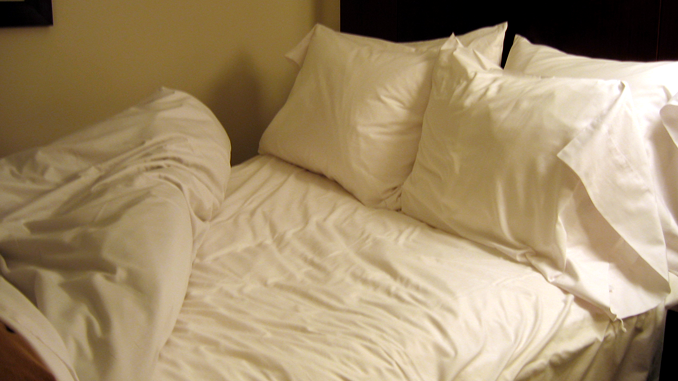
Dion McGregor was a professional songwriter. This was proven conclusively when no less a luminary than Barbra Streisand recorded one of his co-written songs, “Where Is The Wonder?” in 1965. It was early in her career, but she’d already had a hit with “People” and she was attracting a lot of attention. Her rendition of the song he wrote with roommate Michael Barr was filmed for television and, if not a hit, was at least well received.
It was to be the greatest songwriting success of the pair, with the next most popular work being “Try Your Wings” (written for torch singer Blossom Dearie). It was not, however, their greatest recording collaboration.
As mentioned, McGregor and Barr were roommates. Sharing an apartment with someone means learning to accommodate their habits and their problems, if the arrangement is going to last any length of time. And McGregor had a very significant problem.
He talked in his sleep.
This isn’t especially uncommon. Millions of people talk in their sleep. It’s not simply conversation, either; a study in 2008 found that sleep e-mailing had become a rare but verified condition in which people – while still technically asleep – would rise, go to their computer, and send e-mails without any conscious processing of the action. A large study in 2018 found a similar problem with sleep texting for people who keep their phones by their bed.
McGregor’s conversations were different. He didn’t mumble, and he didn’t simply respond to some unknown query posed by a figment of his nocturnal imagination. He spoke fairly clearly and he conducting conversations in a narrative fashion.
Barr, at McGregor’s suggestion, recorded his unconscious ramblings. In all, more than six hundred of the one-sided conversations were captured. Professional researchers are split about the implications. On the one hand, many of the hundreds of recordings are at least somewhat incoherent and match the type of responses which have been found in dozens of similarly high-function sleep talkers. On the other hand, McGregor irregularly produced monologues which were uniquely detailed and comprehensive.
The recordings have been repeatedly analyzed by professional dream researchers and the overwhelming conclusion has been that they were not a hoax. People who aren’t professionals would be excused from their doubts, because they likely only had access to a limited number of the most impressive recordings.
In 1964, Decca released “The Dream World of Dion McGregor”, containing just over 50 minutes of the best examples of his stories. It was illustrated by Edward Gorey.
Decades later, after his death in 1994, some of his other clearly spoken stories such as “Food Roulette” were released.
To date there have been four complete albums of his sleep talking. Although the cohesion which makes his conversations stand out diminish with the later releases (to be expected with a limited number of available recordings and with the best remaining selected for each subsequent album) they remain a benchmark for sleep researchers – and a beloved oddity for fans of unusual records.
Question of the night: Are there any songs you enjoy with spoken word, not sung, elements (including sampling or rap)?
